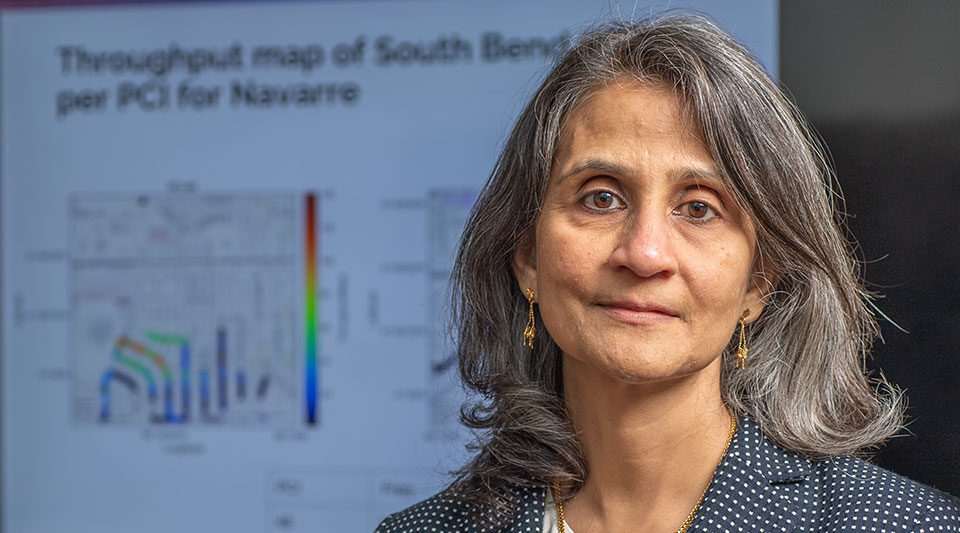Every day, more networked devices — tablets, security cameras, smart watches — join an already congested wireless environment. As the number of devices grows, so too does the potential for disruptions.
How can we achieve the goal of harmonious coexistence among myriad devices and communication systems?
“A lot of my work focuses on identifying how the wireless spectrum can be shared among different services without mutual interference. And that involves taking and analyzing a lot of spectrum measurements,” said Monisha Ghosh, professor of electrical engineering, who joined the Notre Dame faculty in 2022 after serving as chief technology officer at the Federal Communications Commission.
“Without gathering precise and plentiful data on existing wireless and spectrum usage, we won’t have the in-depth knowledge of how the system is actually working, and this might keep us from designing things better,” said Ghosh, who is also the Policy Outreach Director for SpectrumX, the academic hub for the wireless community, and a Wireless Institute affiliate faculty member.


To gather this much-needed data, Ghosh’s students at Notre Dame treat indoor and outdoor spaces as laboratories, measuring the invisible traffic of electromagnetic waves by using their cell phones with customized apps. They walk, drive and sometimes attach their phones to drones to gather large quantities of data on wireless signals.
Ghosh is particularly interested in facilitating public access to wireless service. Citizens Broadband Radio Service (CBRS), a cost-effective, shared part of the spectrum, is currently being used by the City of South Bend to bring internet to school children who lack wireless connectivity.
Postdoctoral researcher Seda Tusha, research associate Armed Tusha, and graduate student Hossein Nasiri gather data from South Bend’s recently installed CBRS base-stations on school buildings and towers to improve transmission quality and verify compliance with federal regulations.
Gathering comprehensive, real-world (rather than simulated) data is also a necessary first step before artificial intelligence (AI) can help manage internet traffic and spectrum access.
“AI has made such rapid leaps of late in language models because of the access to large datasets,” said Ghosh. “We do not, today, have similar datasets for wireless systems and spectrum use. Once we get better wireless data, we will be able to understand how multiple users can share the same channels more effectively without mutual interference. This could be a huge benefit to the wireless research community.”
— Karla Cruise, Notre Dame College of Engineering; Photos by Wes Evard
